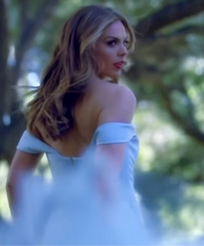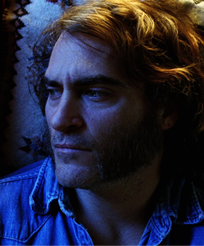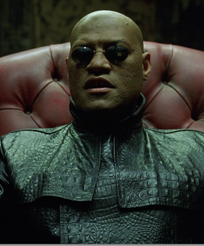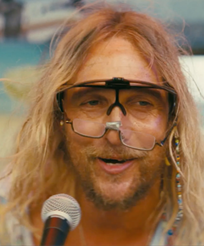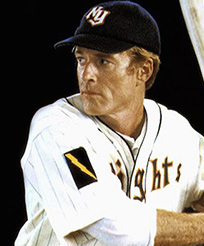About halfway through All These Sleepless Nights—a Sundance darling about two hard-partying adolescents,now streaming on Amazon—we see Krzysztof, the protagonist, walk through stopped cars on a crowded Warsaw boulevard. While the drivers have all gotten out to stare wordlessly at something in the distance, Krzysztof, whom we follow from behind, weaves through oblivious, heading the opposite direction.
The scenes immediately before or after this maybe 10-15 second moment held no clues as to where Krzysztof is going or why, nor does it offer any explanation for what the drivers are gaping at. And so the scene, like so many in the film, floats by on its own coolness, an empty gesture quoting everything from apocalyptic action movies like War of the Worlds and The Day After Tomorrow, to the opening scene of La La Land, to soda commercials. Mostly, though, it reminded me of all those music videos where the singer parades down the middle of a crowded (or empty) street—and once I started thinking of All These Sleepless Nights as one long pop music video, it was hard to stop.
Why? Well, it doesn’t help that the majority of the film consists of people dancing aimlessly at parties, or people looking alone amidst people dancing aimlessly in parties, in dimly lit rooms, in rooms with a red hue. Or that the dialogue that does seep through mostly comes off like pop lyrics or Instagram poetry (“This all feels so unreal, what we’re doing right now.” “Sometimes things seem fake, sometimes they don’t.” “Can you see how lonely I am?”). Or that the plot is threadbare and inconsequential: Krzysztof, at one point, moves out of the apartment he shares with his friend Michal to live alone and date Michal’s ex-girlfriend Eva—we think this might make more of an impact, but Eva is in and out of the film in about 20 minutes.
Mostly, though, it’s that these scenes are often devoid of context, sequenced like pop music videos that cut back and forth between disparate images that might loosely coalesce into a unifying vision, but which, for the most part, seem to be there because they’re sexy, or weird, or look cool. After all, that’s the ethos of pop songs, and the pop music industry-writ-large: let’s hire an army of musicians and songwriters to write for Beyoncé and Taylor, see what happens when Diplo works with Bieber, and have DJ Khaled corral everyone else under the sun to make a certified hit. The result of this mishmash is an overall lack of vision, an everything-as-nothing aesthetic that’s catchy and appealing but ultimately somewhat soulless.
There’s a reason that so many of these songs are about partying and taking drugs at parties, and meant to be listened to while partying and taking drugs at parties. It’s because, like partying and drug taking, the songs feel meaningful while you listen to them. But the high is fleeting. The fact of the matter is that a pop song is a pop song (and those thoughts you had while tripping acid are just those thoughts you had while tripping acid). That’s why, where other filmmakers have succeeded in making visually stunning, loosely plotted films with scant dialogue and acute homages (see: Godard, Malick)—because the various pieces work to form a unique vision or to express a truly complex idea or feeling—those behind All These Sleepless Nights just miss the mark. They treat their subject—partying—as if it is a cinema-worthy subject in and of itself.
Which means we’re left with a film that’s full of laughing but not of humor, a film about having fun that’s really not very fun at all; a film that includes a young woman’s nude figure writhing on the bed that is filmed as amateur porn and actually just plays like amateur porn; a film that then strives for depth by having characters on coke say things like, “do you seem fake to you?” ; a film where coke even serves, in all sincerity, as a metaphor (“A long straight line right in front of you,” one character says, handing Krzysztof the rolled up bill). Better to reflect something true on screen, the highs and lows of it—the irreverently funny conversations, the hijinks, the stupid arguments—than to try and say something deep by making it all grey and melancholy.
And yet, I didn’t hate this movie, just as I don’t hate pop songs, or pop music videos. The filmmakers behind All These Sleepless Nights have a keen visual and sonic sense, and can capture dusk and dawn like Joel Meyerowitz; they do, also, if only briefly, capture some specific and authentic moments, like when Krzysztof lingers around a club trying to take the girl he made out with home (even though it’s so obviously over), or when Michal dials up a girl’s on-and-off-again boyfriend to see if it’s ok to sleep with her. But, like any drug, it leaves you wanting more.
Oh, and sure, one might argue that this visual, music-video-esque porn is, in fact, the film’s point: that all this adolescent partying is is a blurry collage of moments that seem deep but really aren’t. Or that it’s ok for a film to subsist on style alone (just look at Baby Driver). In today’s call-out culture, it can be daunting to try and make art that really says something, while purely visual treats can always be regarded with, “ahhh.” Still, there’s something, perhaps, insidious about fast-food entertainment that’s posing as something more. It makes an audience feel like they’ve done work, when they really haven’t done much at all.
—Joe Eichner






